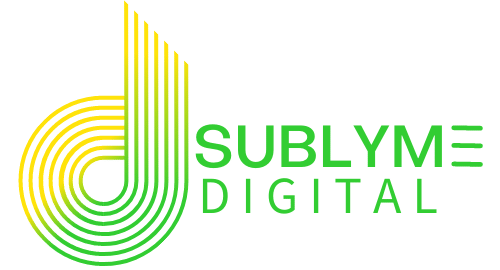
Author: Graham Davidson
Graham Davidson is the Owner and Chief Marketing Guru of Sublyme Digital, leading the agency’s remote-first approach to deliver impactful web design, SEO, and digital growth strategies for businesses across North America.
Enhancing Your Google Ads: Boost Your Quality Score
Key Takeaways
- Quality Score is a crucial metric affecting your ad placement, costs, and overall campaign success.
- It’s determined by Expected Clickthrough Rate (CTR), Ad Relevance, and Landing Page Experience.
- Improving Quality Score requires continuous optimization, data analysis, and a user-first approach.
- Leveraging Google’s recommendations and advanced tactics can give you a competitive edge.
What Is Google Ads Quality Score?
Why Does Quality Score Matter?
- Better Ad Positions: Higher scores help you win better placements—even against higher bidders.
- Lower Costs: Google rewards high-quality ads with lower cost-per-click (CPC).
- More Conversions: Relevant ads and landing pages lead to better user experiences and higher conversion rates.
The Three Pillars of Quality Score
1. Expected Clickthrough Rate (CTR)
- Write compelling, benefit-driven ad copy.
- Use strong calls-to-action (CTAs).
- Continuously test headlines and descriptions.
- Align ad messaging with keyword intent.
2. Ad Relevance
- Group similar keywords into tightly themed ad groups.
- Customize ad copy for each ad group.
- Use dynamic keyword insertion (DKI) where appropriate.
3. Landing Page Experience
- Ensure landing pages directly address the ad’s promise and keyword intent.
- Optimize for mobile and fast page load times.
- Provide clear navigation and strong CTAs.
- Use original, high-quality content with trust signals (testimonials, reviews, security badges).
Types of Quality Score
Keyword Quality Score: Measures relevance between your keyword, ad, and landing page. High keyword Quality Scores mean your ads are more likely to show for relevant searches.
Landing Page Quality Score: Reflects how well your landing page meets the needs of users coming from your ad. Focus on relevance, transparency, and ease of navigation.
Mobile Quality Score: Evaluates your landing page’s performance on mobile devices. Mobile optimization is crucial, as Google prioritizes mobile-first experiences.
Ad Group Quality Score: Assesses the collective performance of all ads and keywords in an ad group. Regularly review and optimize underperforming ad groups.
(Optional) Account-Level Quality Score: While not officially confirmed by Google, many experts believe your overall account history and performance can influence Quality Scores across campaigns.
How to Check Your Quality Score
- Go to your Google Ads dashboard.
- Select your campaign and navigate to the “Keywords” tab.
- Hover over the speech bubble next to each keyword to view its Quality Score, along with ratings for expected CTR, ad relevance, and landing page experience.
Advanced Strategies to Improve Quality Score
1. Conduct In-Depth Keyword Research
- Use Google Keyword Planner, SEMrush, or Ahrefs to discover high-intent keywords.
- Identify negative keywords to filter out irrelevant traffic.
2. Structure Campaigns for Relevance
- Create tightly themed ad groups for each product/service.
- Write unique ads for each group.
3. Optimize Ad Copy Continuously
- Test multiple ad variations (A/B testing).
- Use emotional triggers and urgency.
- Highlight unique selling points (USPs) and benefits.
4. Enhance Landing Page Quality
- Match landing page content to ad copy and keywords.
- Use clear headlines, bullet points, and visual cues.
- Add trust signals: testimonials, reviews, certifications.
5. Focus on Mobile Experience
- Use responsive design.
- Compress images for faster load times.
- Simplify forms and navigation.
6. Leverage Ad Extensions
- Use sitelinks, callouts, structured snippets, and call extensions to increase ad visibility and engagement.
7. Monitor and Iterate
- Use Google Analytics and Ads reports to track performance.
- Regularly pause or optimize low-performing keywords and ads.
- Stay updated with Google’s best practices and algorithm changes.
Quality Score isn’t just a number—it’s the digital fingerprint of your ad strategy. Master it, and you unlock the highest ROI in the Google Ads ecosystem.

Final Thoughts
- Ad Spend Goes Further: Higher Quality Scores mean lower cost-per-click, so your budget stretches further and delivers more results for every dollar invested.
- Competitive Advantage: In crowded markets, a superior Quality Score can help you outrank bigger competitors—even if their budgets are larger—because Google rewards relevance and user experience.
- Continuous Improvement: Treating Quality Score as a strategic asset fosters a culture of ongoing optimization, data analysis, and adaptation to new trends (like AI-driven search or evolving user behaviors).
- Stronger Brand Reputation: Ads that consistently match user intent and deliver on their promises build trust and authority, both with Google and your audience.
Success Stories
365 Data Centers
Discover how we rapidly rebuilt and optimized a 30-page website for 365 Data Centers, restoring their online presence and managing digital ad campaigns across key regions to drive engagement and growth.
XTECH Football Pads
Discover how we transformed XTECH Football Pads‘ digital presence, boosting their online sales and tripling website traffic through innovative website development and user experience enhancements.
BeEarth Foundation
Discover how we partnered with the BeEarth Foundation to develop a website that aligns with their mission of sustainability and global engagement. Our work has significantly increased their online visibility and engagement, supporting their efforts to promote sustainable development.
We Recycle Solar
Learn how we illuminated digital success for We Recycle Solar by completely redesigning their website to reflect their leadership in the growing solar recycling industry and implementing strategic digital advertising campaigns that enhanced their visibility at key industry events.
Preferred Home Health Care & Nursing Services
Explore how we elevated the digital presence of Preferred Home Health Care & Nursing Services by enhancing their website for better lead generation, building a dedicated site for staff recognition, and optimizing SEO for their location pages.
What Our Clients Say: Elevating Online Success
We Build Cool
FAQs:
Answer: Weekly for active campaigns, and after any major changes.
Answer: No. Bids affect ad rank, but Quality Score is earned through relevance and user experience.
Answer: Yes, if they’re not critical to your business. Low scores can drag down your account.
Answer: Use Google’s Ad Diagnostics and on-page analytics. High bounce rates and low engagement are red flags.
Answer: No, but the principles of relevance, UX, and speed apply to both.
Let's Build Something Sublyme
Ready to create SEO content that works for large language models? Sublyme Digital specializes in crafting AI-optimized content that drives results. Contact us today to get started!



